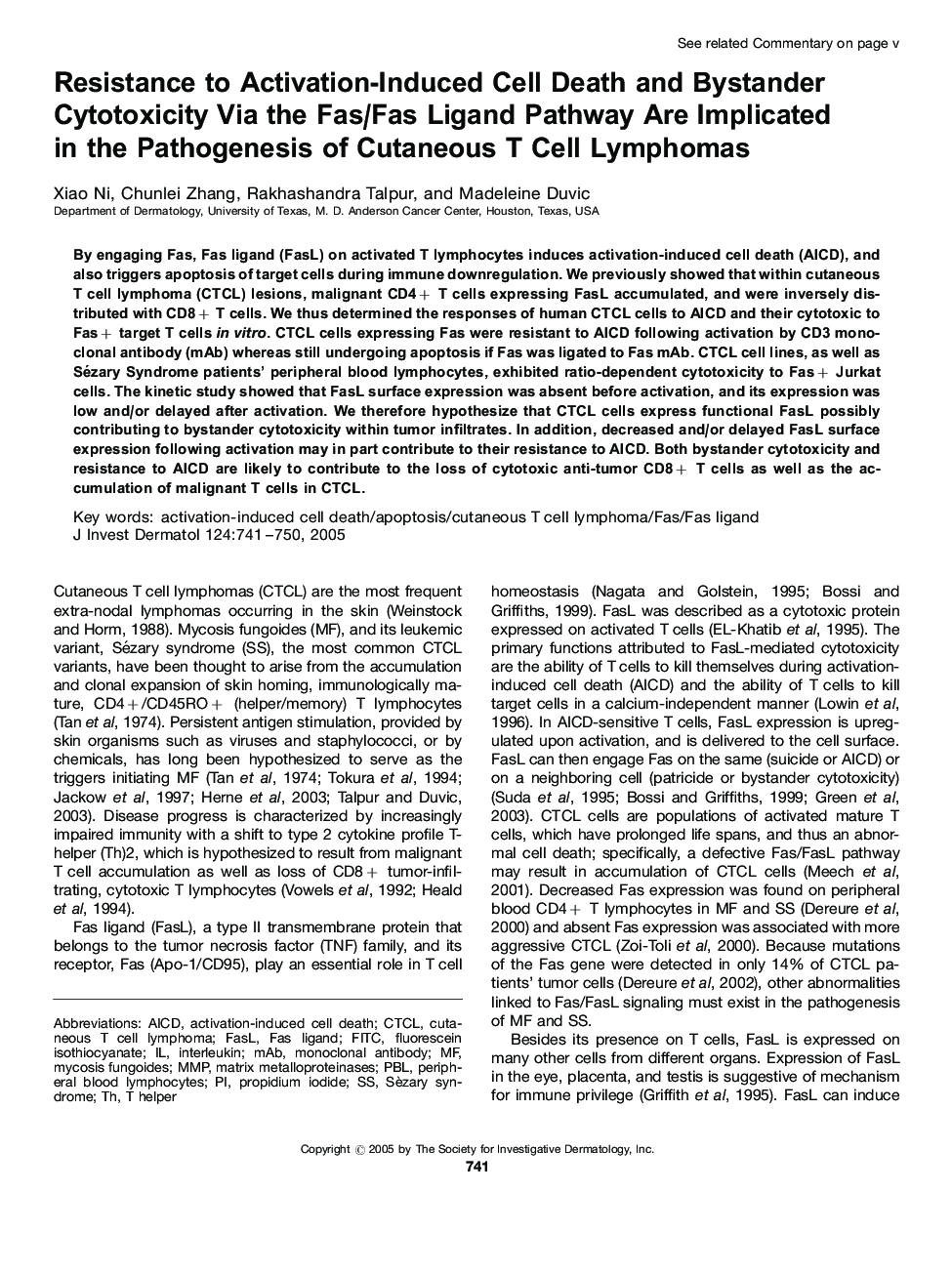| کد مقاله | کد نشریه | سال انتشار | مقاله انگلیسی | نسخه تمام متن |
|---|---|---|---|---|
| 9230344 | 1203629 | 2005 | 10 صفحه PDF | دانلود رایگان |
عنوان انگلیسی مقاله ISI
Resistance to Activation-Induced Cell Death and Bystander Cytotoxicity Via the Fas/Fas Ligand Pathway Are Implicated in the Pathogenesis of Cutaneous T Cell Lymphomas
دانلود مقاله + سفارش ترجمه
دانلود مقاله ISI انگلیسی
رایگان برای ایرانیان
کلمات کلیدی
موضوعات مرتبط
علوم پزشکی و سلامت
پزشکی و دندانپزشکی
امراض پوستی
پیش نمایش صفحه اول مقاله

چکیده انگلیسی
By engaging Fas, Fas ligand (FasL) on activated T lymphocytes induces activation-induced cell death (AICD), and also triggers apoptosis of target cells during immune downregulation. We previously showed that within cutaneous T cell lymphoma (CTCL) lesions, malignant CD4+ T cells expressing FasL accumulated, and were inversely distributed with CD8+ T cells. We thus determined the responses of human CTCL cells to AICD and their cytotoxic to Fas+ target T cells in vitro. CTCL cells expressing Fas were resistant to AICD following activation by CD3 monoclonal antibody (mAb) whereas still undergoing apoptosis if Fas was ligated to Fas mAb. CTCL cell lines, as well as Sézary Syndrome patients' peripheral blood lymphocytes, exhibited ratio-dependent cytotoxicity to Fas+ Jurkat cells. The kinetic study showed that FasL surface expression was absent before activation, and its expression was low and/or delayed after activation. We therefore hypothesize that CTCL cells express functional FasL possibly contributing to bystander cytotoxicity within tumor infiltrates. In addition, decreased and/or delayed FasL surface expression following activation may in part contribute to their resistance to AICD. Both bystander cytotoxicity and resistance to AICD are likely to contribute to the loss of cytotoxic anti-tumor CD8+ T cells as well as the accumulation of malignant T cells in CTCL.
ناشر
Database: Elsevier - ScienceDirect (ساینس دایرکت)
Journal: Journal of Investigative Dermatology - Volume 124, Issue 4, April 2005, Pages 741-750
Journal: Journal of Investigative Dermatology - Volume 124, Issue 4, April 2005, Pages 741-750
نویسندگان
Xiao Ni, Chunlei Zhang, Rakhashandra Talpur, Madeleine Duvic,